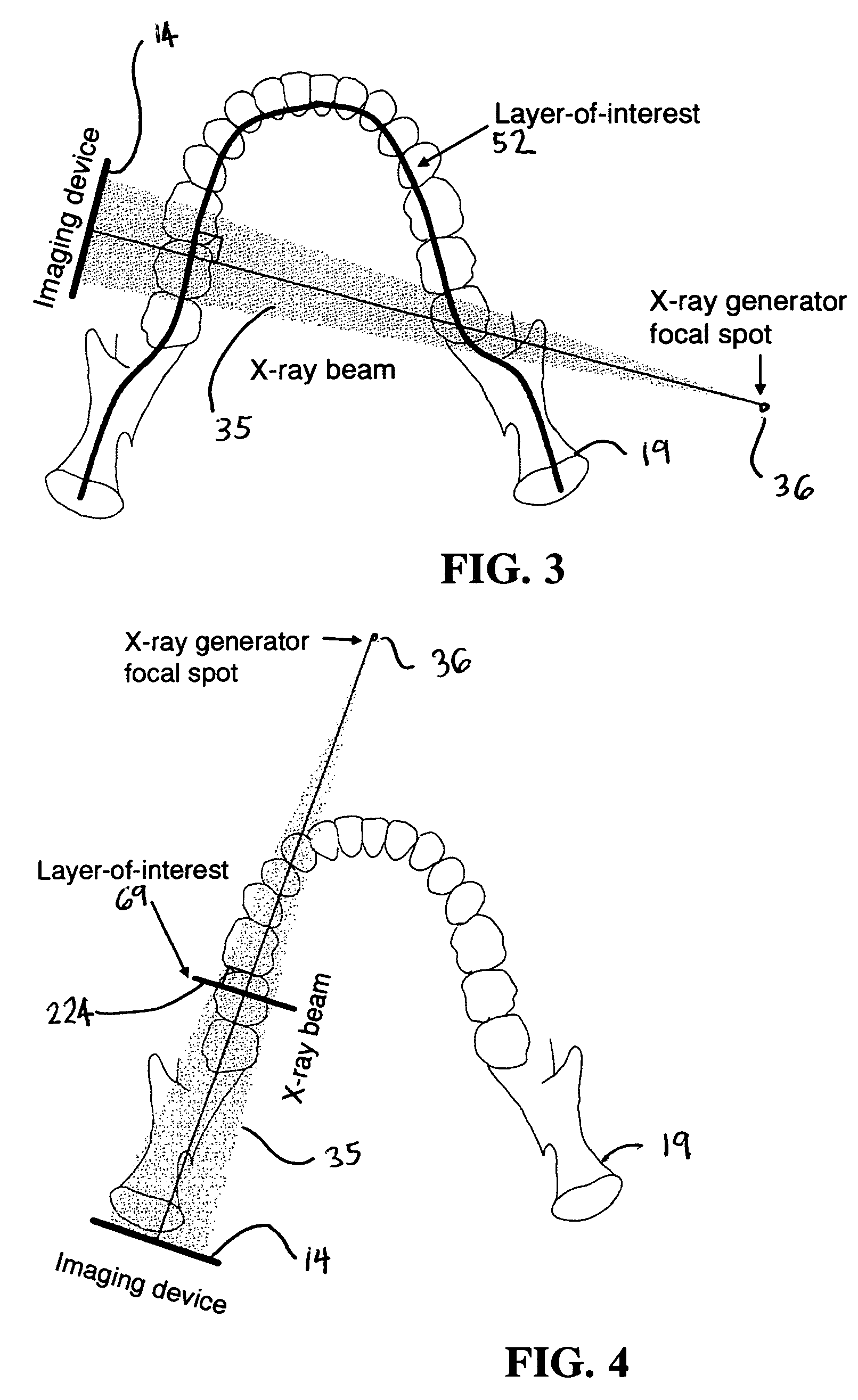Dental extra-oral x-ray imaging system and method
a x-ray imaging and extraoral technology, applied in the field of x-ray imaging devices, can solve the problems of insufficient continuous exposure, inability to see in real time, and high cost of equipment and especially the cone beam ct and transverse slicing equipment which produce multiple frames
- Summary
- Abstract
- Description
- Claims
- Application Information
AI Technical Summary
Benefits of technology
Problems solved by technology
Method used
Image
Examples
Embodiment Construction
)
[0047]Referring now to FIGS. 1 and 2, the system 10 of the invention uses a frame mode CdTe-CMOS detectors for creating tomographic images including dental panoramic images using a dental x-ray setup. In this application, the read-out speed or frame rate need only be high enough to allow the detector to move by more than half a pixel size or preferably even less per a read-out cycle. However, serious limitations can arise such as the need to transfer a disproportionately large amount of data to a computer or the like in real-time. Therefore, it is beneficial to manage data in order to reconstruct and display an image in real-time, during the exposure.
[0048]The dental x-ray imaging system 10 produces panoramic images 12 for use in dental diagnosis and treatment. The system 10, using data generated from a single exposure, selectively produces at least two of the following: 1) a predetermined dental panoramic layer image 2) at least part of another dental panoramic layer(s) 3) transve...
PUM
 Login to View More
Login to View More Abstract
Description
Claims
Application Information
 Login to View More
Login to View More - R&D
- Intellectual Property
- Life Sciences
- Materials
- Tech Scout
- Unparalleled Data Quality
- Higher Quality Content
- 60% Fewer Hallucinations
Browse by: Latest US Patents, China's latest patents, Technical Efficacy Thesaurus, Application Domain, Technology Topic, Popular Technical Reports.
© 2025 PatSnap. All rights reserved.Legal|Privacy policy|Modern Slavery Act Transparency Statement|Sitemap|About US| Contact US: help@patsnap.com



